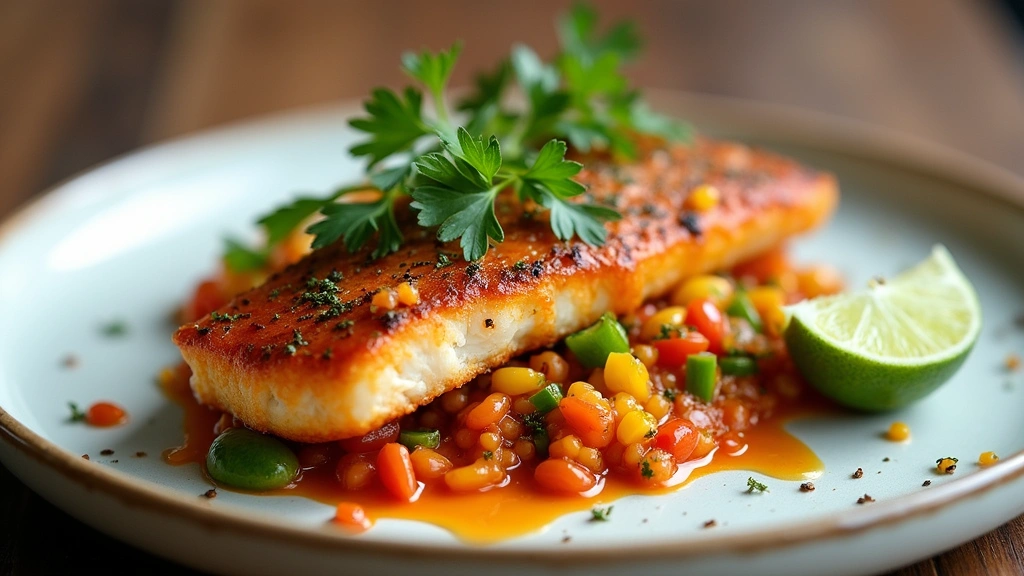Zesty Chilli Lime Fish is a vibrant and refreshing dish that captures the essence of tropical cuisine.
The burst of citrus from lime combined with the fiery kick of chili creates a flavor explosion in every bite.
This recipe reflects my fond memories of summer vacations by the beach, where fresh seafood always takes center stage.
Perfect for a quick weeknight meal or an impressive dish for entertaining, this recipe is sure to tantalize your taste buds.
The History and Cultural Significance
• Zesty Chilli Lime Fish traces its origins to coastal regions of Central America, particularly Mexico, where fresh seafood is a dietary staple.
• The dish evolved over decades as local fishermen adapted their cooking techniques and incorporated indigenous spices, eventually becoming a beloved version known for its bold flavors.
• In Mexican culture, this dish traditionally appears at festive gatherings and beachside celebrations, symbolizing the joy of communal dining and the bounty of the sea.
• While many variations exist across different regions, the authentic version maintains a balance of acidity and heat that sets it apart from imitations.
Recipe Overview
Nutritional Information (per serving)
You might also like
Ingredients
servings
Essential Equipment Guide
Non-Stick Skillet: A non-stick skillet is crucial for cooking fish without it sticking and breaking apart.
Look for a skillet with a thick bottom for even heat distribution and a smooth surface for easy flipping.
If you don’t have a non-stick skillet, you can use a well-seasoned cast iron skillet, but be sure to use enough oil to prevent sticking.
Fish Spatula: This specialized spatula is designed for flipping delicate fish fillets without tearing them.
Its thin, slotted design allows for easy maneuvering under the fish while leaving excess oil behind.
If you don’t have a fish spatula, a standard spatula can work, but be gentle when flipping to avoid breaking the fillet.
Measuring Cups and Spoons: Accurate measurements are key to achieving the right balance of flavors, especially with the marinade.
Investing in a good set of measuring cups and spoons will ensure you get the ratios just right.
If you don’t have access to measuring tools, try using standard kitchen items, like a tablespoon or a coffee cup, but be aware that this may affect the final taste.
Preparation Methods
Marinating the Fish: Marinating is crucial for infusing the fish with the zesty and spicy flavors of the marinade.
Allow the fish to marinate for at least 15 minutes but not more than an hour to prevent the fish from becoming too mushy.
Make sure to coat all sides of the fish thoroughly in the marinade for even flavor distribution.
Cooking with High Heat: Cooking fish at high heat creates a delicious crust on the outside while keeping the inside moist.
Preheat your skillet to medium-high heat before adding the fish to ensure a perfect sear.
Do not overcrowd the skillet; cook in batches if necessary to maintain the temperature.
Flipping the Fish: Flipping fish can be tricky due to its delicate nature.
Use a fish spatula to gently lift the fish and flip it only once to avoid breaking the fillet.
Wait until the fish releases naturally from the skillet before attempting to flip it; this indicates that it’s cooked enough on one side.
Step 1: Prepare Ingredients
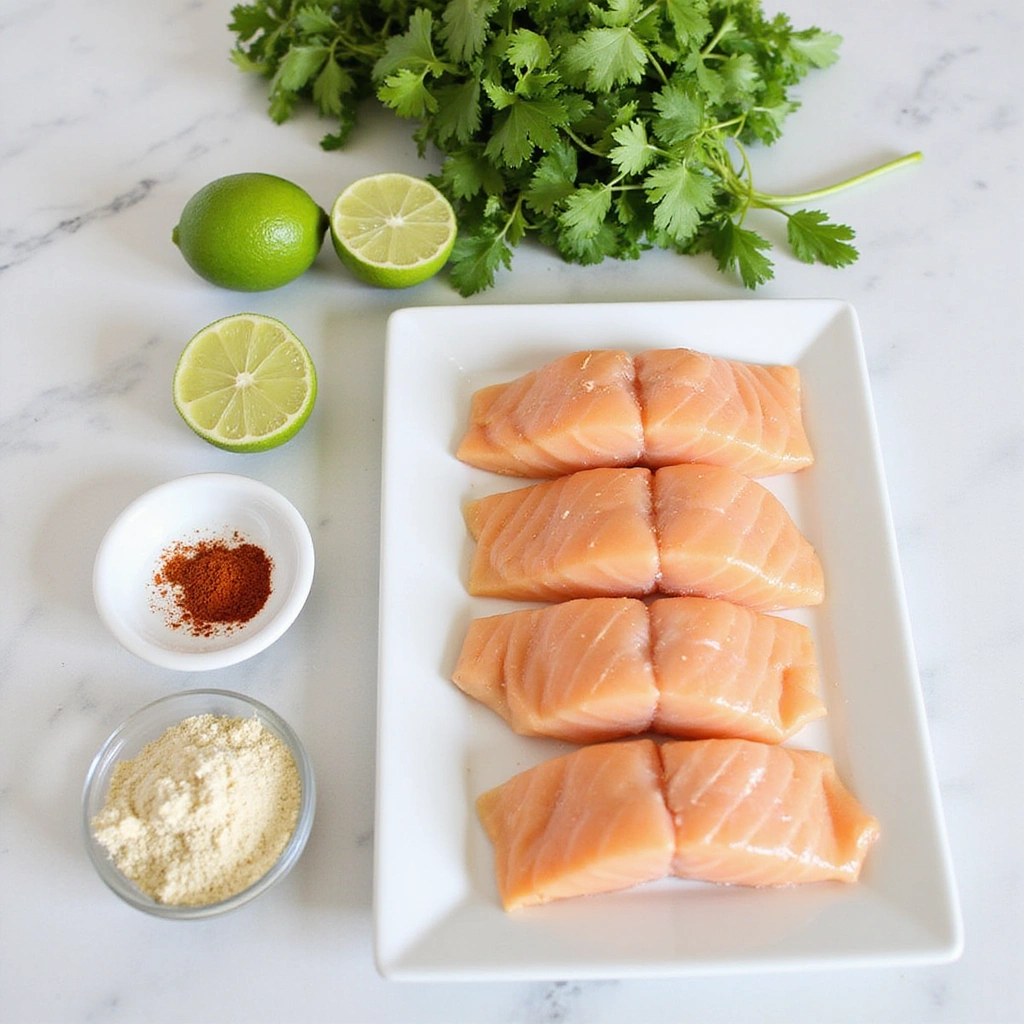
Gather all the ingredients needed for the recipe.
Make sure to have the fish fillets, marinade ingredients, and garnishes ready at hand.
This will streamline the cooking process and ensure that you don’t miss any ingredients.
Wash and chop the cilantro for garnish and set it aside for later use.
Step 2: Make the Marinade

In a mixing bowl, combine the olive oil, lime juice, chili powder, and garlic powder.
Whisk together until well combined, creating a smooth marinade.
Taste the marinade to adjust seasoning if necessary; it should be tangy and spicy.
Set aside the marinade while you prepare the fish for cooking.
Step 3: Marinate the Fish

Place the fish fillets in a shallow dish and pour the marinade over them.
Ensure each fillet is well coated with the marinade, using a brush or spoon if necessary.
Cover the dish and let the fish marinate for at least 15 minutes to absorb the flavors.
Do not marinate for longer than an hour to avoid the fish becoming too mushy.
Step 4: Heat the Skillet
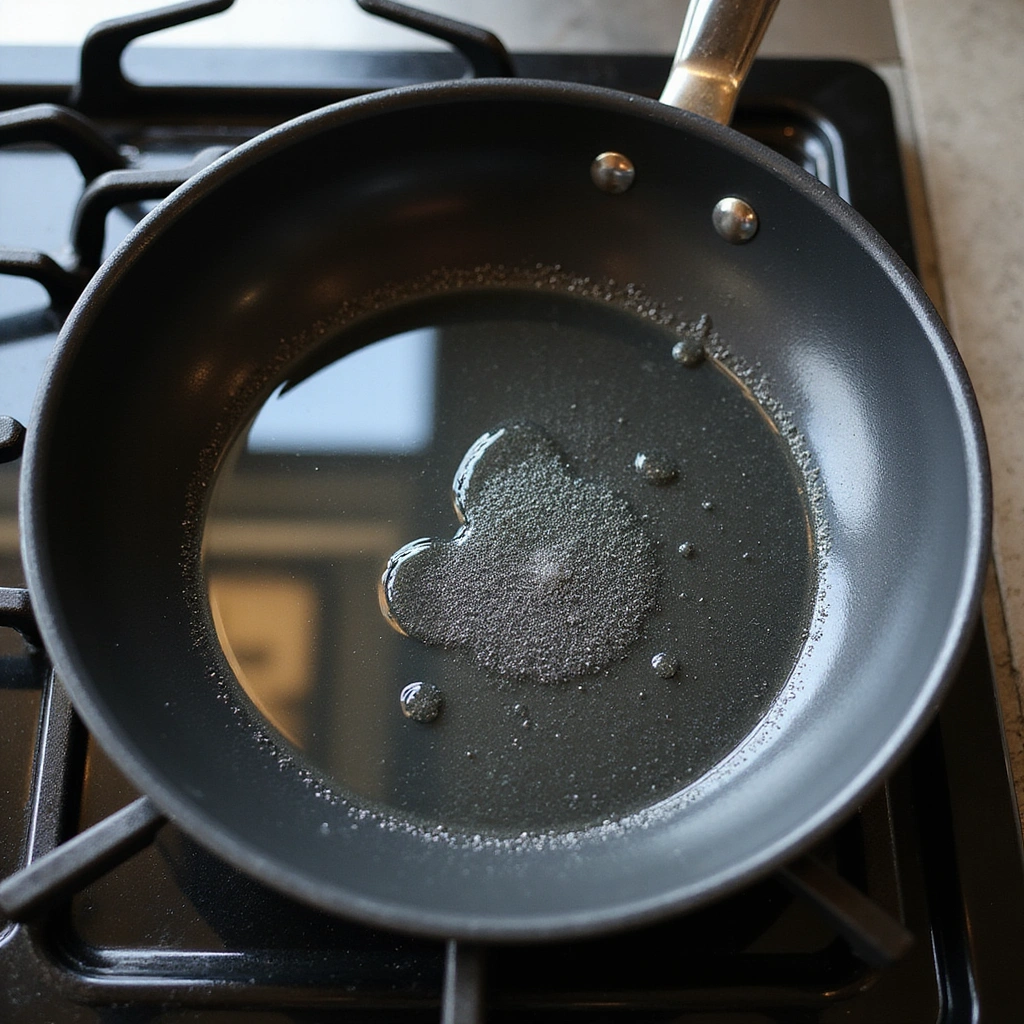
Place a non-stick skillet over medium-high heat and allow it to preheat for a few minutes.
You want the skillet hot enough that a drop of water sizzles when it hits the surface.
Add a tablespoon of oil to the skillet, ensuring it coats the bottom evenly.
This will help create a nice sear on the fish and prevent sticking.
Step 5: Cook the Fish – First Side
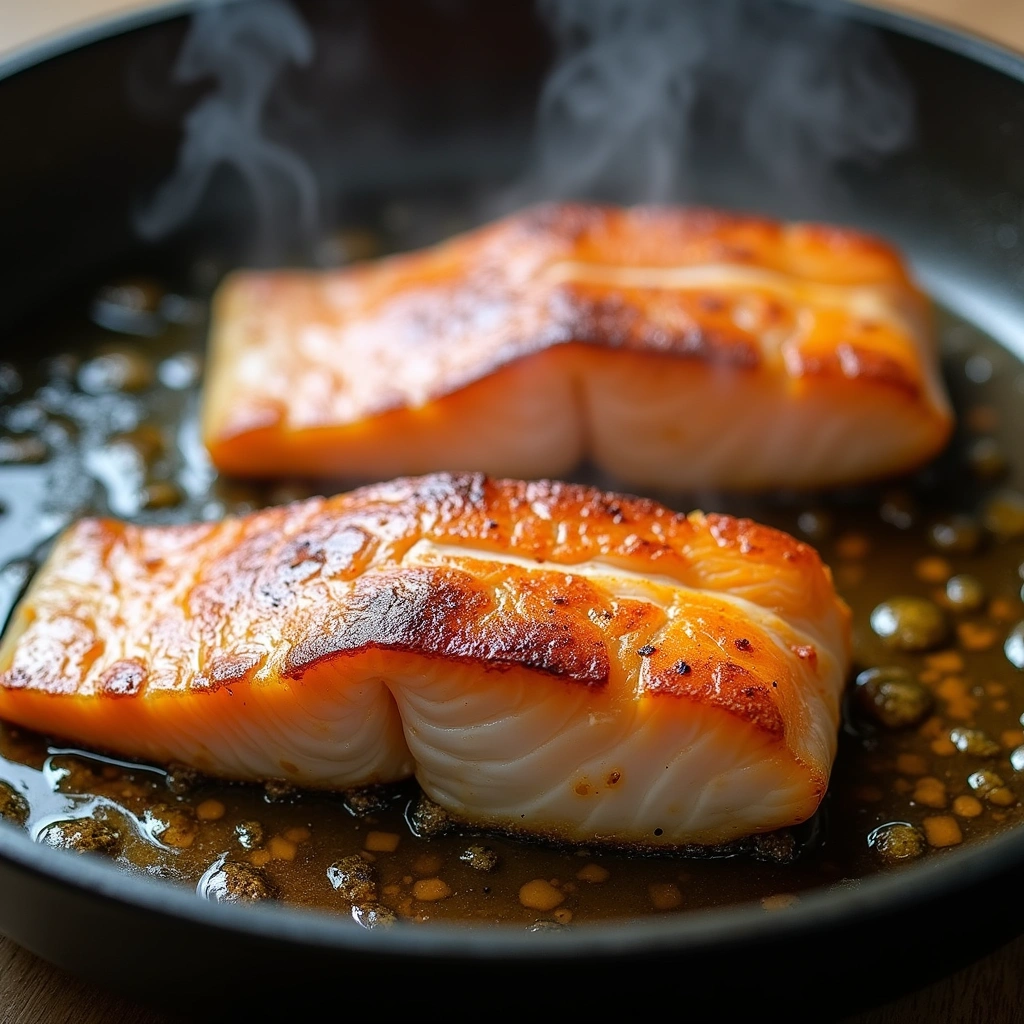
Carefully place the marinated fish fillets in the hot skillet, making sure they are not overcrowded.
Cook the fillets for about 3-4 minutes on the first side until golden brown and crispy.
You can gently shake the skillet to prevent the fish from sticking.
Look for the edges of the fish to turn opaque as an indicator that it is ready to flip.
Step 6: Flip the Fish
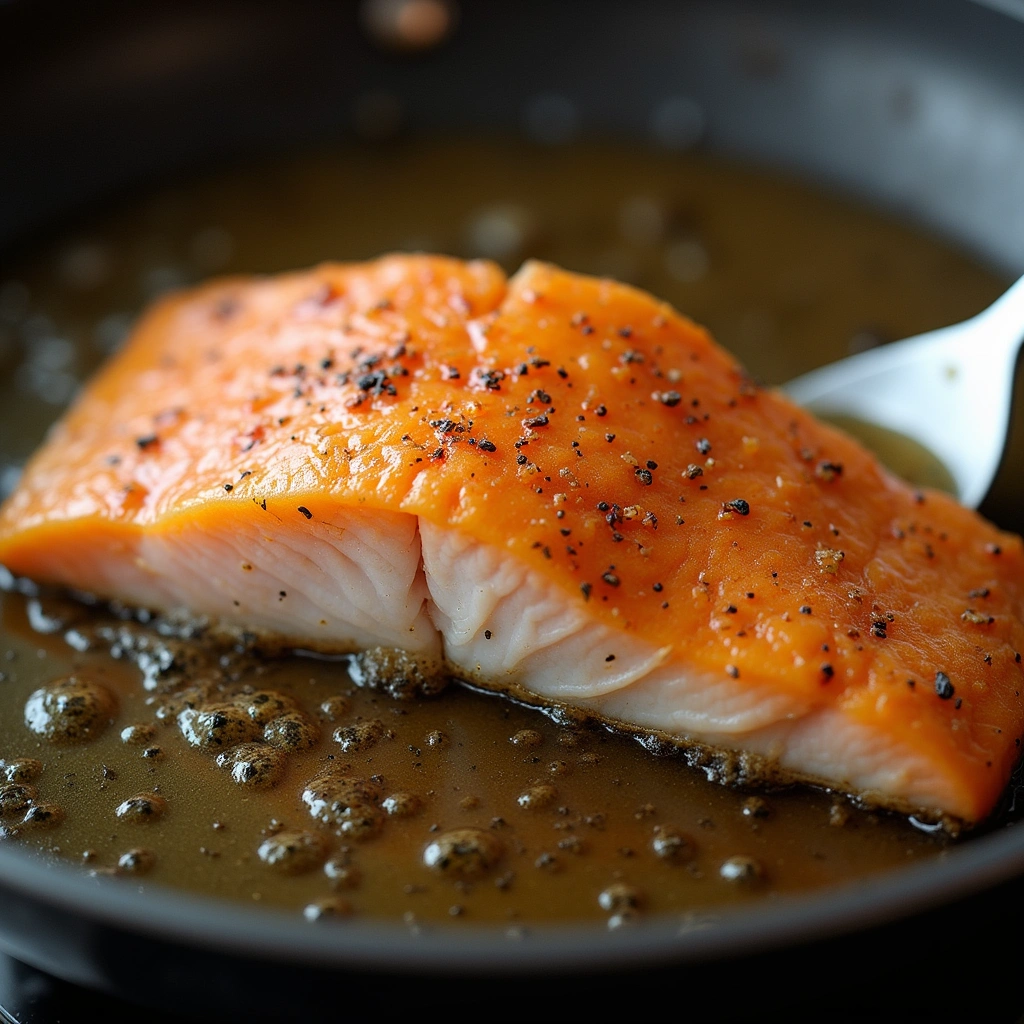
Using a fish spatula, carefully lift each fillet to flip them over.
Do this gently to avoid breaking the fillets; they should release easily from the skillet.
Cook the other side for an additional 3-4 minutes until it is cooked through and flaky.
The fish should have a nice golden crust on both sides when done.
Step 7: Check for Doneness
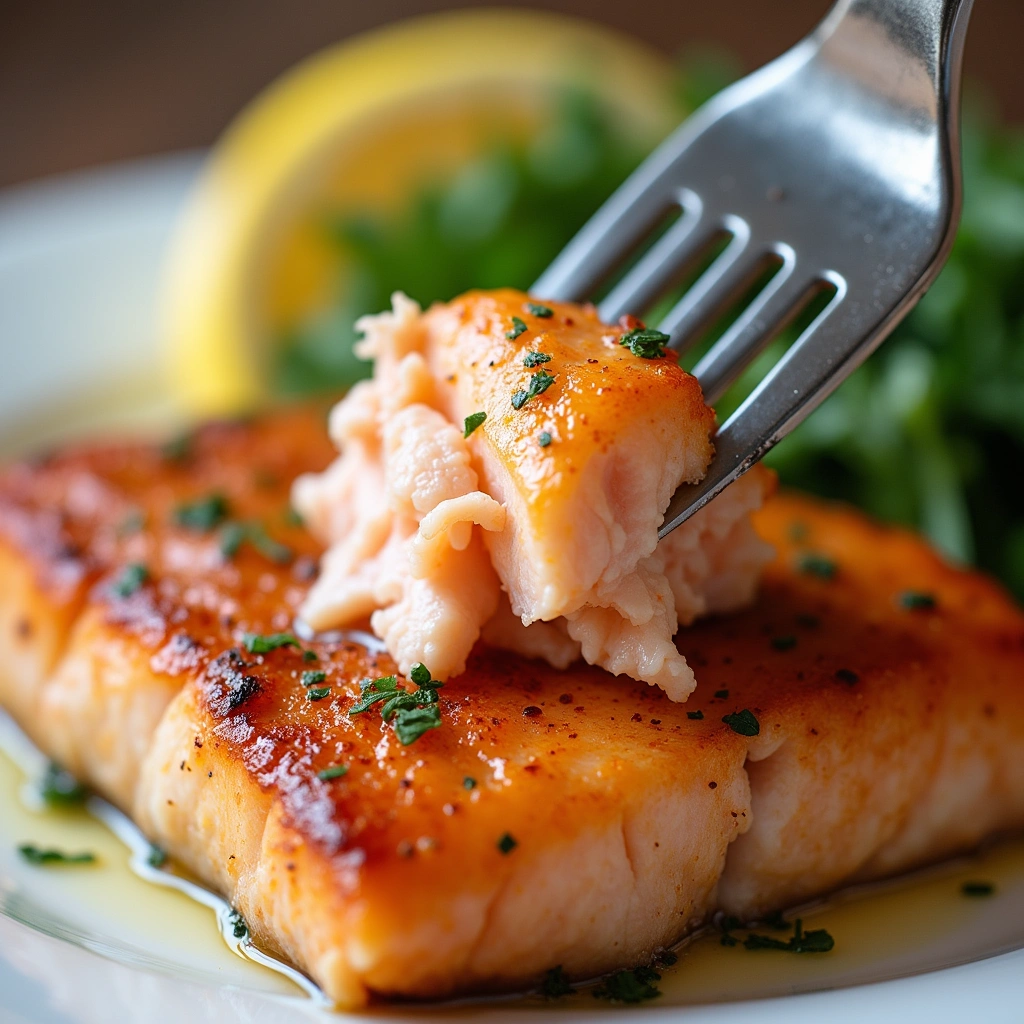
After cooking for about 3-4 minutes on the second side, check the fish for doneness.
It should be opaque throughout and flake easily when tested with a fork.
If it’s not quite done, give it another minute or two in the skillet.
Be careful not to overcook, as this can result in dry fish.
Step 8: Garnish and Serve

Remove the cooked fish from the skillet and place it on a serving plate.
Sprinkle the chopped cilantro generously on top for added freshness.
You may also add extra lime wedges on the side for guests to squeeze over their fish.
Serve immediately while hot, alongside your choice of sides.
Critical Timing and Temperature Guide
Marinating Time: Allow the fish to marinate for 15-30 minutes.
This allows enough time for the flavors to penetrate the fish without making it mushy.
Avoid marinating for longer than an hour to maintain the fish’s texture.
Cooking Temperature: Ensure your skillet is preheated to medium-high before adding the fish.
This helps create a good sear and prevents sticking.
You should hear a sizzle as soon as the fish hits the skillet.
Doneness Check: Fish is done when it is opaque and flakes easily with a fork.
Typically, this takes about 3-4 minutes per side, depending on the thickness of the fillets.
Avoid overcooking, which can make the fish dry.
Pro Tips for Zesty Chilli Lime Fish
• Ingredient Selection: Choose the freshest fish you can find; this significantly enhances flavor and texture.
• Preparation Secret: Consider adding a touch of honey to the marinade for a subtle sweetness that balances the acidity.
• Temperature Management: Ensure your fish is at room temperature before cooking to promote even cooking.
• Texture Enhancement: Use high heat for a quick sear, which creates a crispy exterior while keeping the inside moist.
• Flavor Layering: Add a pinch of salt to the fish right before cooking to enhance the natural flavors.
• Make-Ahead Strategies: You can prepare the marinade a day in advance and store it in the fridge until ready to use.
• Restaurant-Quality Finishing Touches: Drizzle a bit of lime-infused olive oil over the finished dish for an elegant touch.
• Equipment Optimization: Use a well-seasoned cast iron skillet if you don’t have a non-stick option for a great sear.
Troubleshooting Common Issues
• Fish Sticking to the Skillet: This can occur if the skillet isn’t preheated enough or if you overcrowd the pan.
Ensure the skillet is hot and only cook a few fillets at a time to prevent sticking.
• Fish Overcooked: If your fish is dry, it may have been cooked too long.
Monitor the cooking time closely, and check for doneness frequently.
• Flavor Too Strong: If the marinade is too overpowering, consider using less chili powder or adding more lime juice to balance it out.
Next time, adjust the spice levels to your taste preferences.
• Insufficient Marinade Flavor: If the fish lacks flavor, ensure it’s well-coated and marinated for the full recommended time.
You can also try making incisions in the fish to allow the marinade to seep in better.
• Uneven Cooking: If some pieces are undercooked, ensure they’re of uniform thickness and don’t overcrowd the skillet.
Use a meat thermometer to check that the internal temperature reaches 145°F.
Variations and Regional Differences
• Peruvian Ceviche Style: In this variation, the fish is marinated in lime juice without any cooking, resulting in a fresh ceviche style dish.
It incorporates additional ingredients like red onions and corn for a more complex flavor.
• Thai Influence: Adding coconut milk and Thai basil to the marinade creates a tropical twist that complements the fish beautifully.
This version is often served with jasmine rice and a side of spicy dipping sauce.
• Spicy Caribbean Version: Incorporating scotch bonnet peppers in the marinade adds a fiery kick that’s characteristic of Caribbean cuisine.
This version is often paired with rice and peas for a complete meal.
• Modern Interpretations: Many chefs now incorporate modern techniques like sous-vide cooking to ensure perfectly cooked fish that is moist and flavorful.
Food Science Behind the Recipe
• Marinade Chemistry: The acid in the lime juice denatures the proteins in the fish, effectively ‘cooking’ it and adding flavor.
This process tenderizes the fish, making it more flavorful and easier to flake.
• Maillard Reaction: Cooking the fish at high heat causes the Maillard reaction, which creates a delicious brown crust on the outside.
This adds both flavor and texture, enhancing the overall eating experience.
• Emulsification: The olive oil in the marinade helps to create an emulsion, allowing the flavors to coat the fish evenly.
This process aids in flavor absorption during marination.
Frequently Asked Questions
What’s the most common mistake people make when preparing Zesty Chilli Lime Fish? Overcooking the fish is a common mistake.
Keep a close eye on the cooking time and check for doneness frequently to avoid this.
Can I prepare components of this dish in advance? Yes! You can marinate the fish up to an hour in advance and store it covered in the refrigerator.
However, avoid marinating for too long to maintain the fish’s texture.
How do I adapt this recipe for dietary restrictions? For a gluten-free version, ensure all sauces and spices are certified gluten-free.
You can also replace the olive oil with avocado oil for a different flavor profile.
What’s the best way to store and reheat leftovers? Store leftovers in an airtight container in the refrigerator for up to 2 days.
To reheat, place the fish in a skillet over low heat until warmed through, or microwave in short bursts.
Can I freeze this dish? Yes, you can freeze the cooked fish for up to 3 months.
Wrap it tightly in plastic wrap and then in aluminum foil before freezing.
What wine or beverages pair best with this dish? A crisp, chilled Sauvignon Blanc or a light lager complements the zesty flavors beautifully.
How can I scale this recipe up for a crowd? Simply multiply the ingredients by the number of servings you need, keeping the same ratios.
Make sure to cook in batches to ensure even cooking.
What side dishes complement this recipe best? Serve alongside a fresh green salad or coconut rice for a refreshing contrast to the spicy fish.
How do professional chefs elevate this dish for restaurant service? Chefs often use garnishes like microgreens or edible flowers for a visually stunning presentation.
Serving and Presentation Guide
• Traditional Presentation: The fish is typically served on a large platter, garnished with cilantro and lime wedges for a fresh look.
This traditional style emphasizes communal dining and vibrant colors.
• Modern Plating Ideas: For a contemporary touch, serve the fish on a sleek white plate with drizzles of the marinade around the edges.
Add a side of colorful vegetables arranged artistically for visual appeal.
• Accompaniment Suggestions: Pair the fish with sides like avocado salad, coconut rice, or grilled vegetables that complement the flavors.
These sides help create a well-rounded meal.
• Special Occasion Presentation: For celebrations, consider serving individual portions on elegant plates with a sprig of cilantro on top and a lime twist.
This adds a touch of sophistication to your dining experience.
Conclusion
Zesty Chilli Lime Fish is not just a meal; it’s a celebration of flavors that can transport you straight to the coast.
With its perfect balance of spice and zest, this dish is sure to impress family and friends alike.
I hope you enjoy making this recipe as much as I do, and that it becomes a staple in your kitchen.
